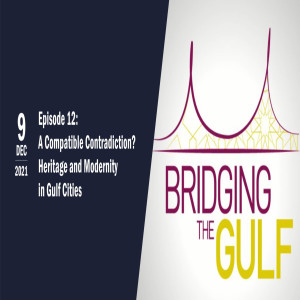Episodes

Thursday Dec 23, 2021
Thursday Dec 23, 2021
The bulldozers are here. This time, they are here for Jebel Ali – the region’s first major shipping hub and dry dock located in Dubai. Like many other built relics in the Gulf, including the coral stone homes of Dubai’s rulers along its famous saltwater creek, these buildings were razed to make way for more modern structures. This is the story of the meteoric rise of Gulf cities – most of them were once sleepy pearling towns but they now embrace soaring skyscrapers and megamalls. Beyond the superlatives (the “tallest”, the “biggest”, the “most expensive” etc.), sociocultural anthropologist Sulayman Khalaf writes that Gulf architecture is not created in isolation. Rather, constituents of urbanisation, Arab/Muslim identity and the oil political economy all form a dynamic interplay in city planning. How then can we describe Gulf architecture? Consumerist? Modernist? Where does the notion of heritage fit in? Does the import of Western technical knowledge erase local khaleeji urbanism?
MEI (NUS) has had the pleasure to host the co-editors of the volume, Urban Modernity in the Contemporary Gulf, to examine the Gulf’s engagement with architectural modernism over the decades. This discussion also aims to address the nature of the relationship between the built environment and Gulf societies.
For more information about this event, click here: https://mei.nus.edu.sg/event/bridging-the-gulf/


Comments (0)
To leave or reply to comments, please download free Podbean or
No Comments
To leave or reply to comments,
please download free Podbean App.